We’re always looking for talented, energetic and dedicated individuals. At Alloy Wheel Repair Specialists, our mission is to provide a superior customer experience by providing high-quality alloy wheel repair and custom wheel coloring services. Hiring the right team members is an important part of this.
From positions in our Atlanta corporate office to technicians and sales/service representatives in local areas at our franchise and corporate retail locations, there are open positions across the United States at more than 120 wheel repair locations.
What better way to find out more about our company and what it’s like to work at Alloy Wheel Repair Specialists than to hear from our team members themselves? Learn about our company culture, training opportunities – and some of the benefits you’ll be eligible for when you join our team.
Not sure if you have the right training or certification to join our wheel repair team? Alloy Wheel Repair Specialists provides training – as well as a certification program – once you are hired. If you have the skills and the motivated attitude we are looking for, we can get you the training you need to be successful.
If you’re ready to take your career to the next level, then it’s time to join the Alloy Wheel Repair Specialists team! Take the first step and contact the franchise location nearest you to apply, or apply online at one of our corporate locations listed below.
Arkansas
Connecticut
Kansas City
New Jersey
Atlanta
Dallas
Las Vegas
St. Louis
Baltimore
Florida
Louisiana
Chicago
Indianapolis
Our wheel repair technicians work at wheel repair locations across the United States. For locations that do not have a retail storefront, technicians operate from a Mobile Reconditioning Facility (MRF) and service car dealerships, used car lots, collision shops, tire stores, auto auctions, car rental agencies – any business that needs cosmetic wheel repair and straightening.
For locations that do not have a retail storefront, technicians operate from a Mobile Reconditioning Facility (MRF) and service car dealerships, used car lots, collision shops, tire stores, auto auctions, car rental agencies – any business that needs cosmetic wheel repair and straightening.
We are searching for energetic individuals that want to utilize their skills and make an above-average income as an alloy wheel repair technician. Most of our locations pay a commission to their technicians, so the amount that you can earn is unlimited. The right candidate will have some sales skills and be self-motivated with a desire to learn and succeed.
Are you looking for a sales representative job that includes a competitive base salary, bonus potential, plus health benefits? Want to be part of the growing automotive services industry? With products and services you can believe in, we’re a company you’d be proud to represent.
Whether you are looking to work at a franchise location or a corporate location, at Alloy Wheel Repair Specialists we are dedicated to providing you with a career you will love. Get started by finding the franchise location in your area, or apply at the link above.
When it comes to repairing alloy wheels, we know how to get the wheel repaired safely and quickly. If wheel remanufacturing is necessary, our nationwide centers offer free pick-up and delivery, with a 24-hour turnaround in most cases. From painting your rims to straightening a wheel, our team at Alloy Wheel Repair Specialists can help.
We fix wheel & rim damage such as scratched and/or bent alloy wheels and minor cracks. We can return many wheels to like-new.
Our team provides complete, off-the-car wheel refinishing for alloy wheels that are scratched, scraped or that have peeling paint.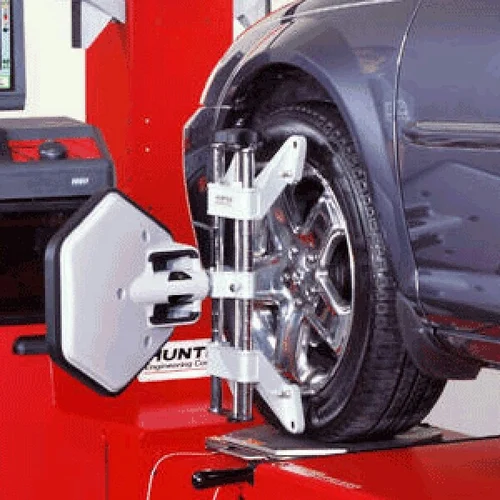
For alloy wheels with extensive damage such as missing metal or rims with special finishes, wheel remanufacturing is the solution.
Give your car or truck a new look with wheel custom coloring. Powder coating and wheel painting delivers “limited edition” results.
Read More Reviews
Read More Blogs
Then give us a Call or Request a Wheel Repair Request Online
Alloy Wheel Repair Specialists
Corporate Office
Business Days & Hours
Monday thru Friday
8:30 am to 5:30 pm
(770) 903-1236
Quick Links
Connect With Us
Facebook-f Youtube Linkedin Twitter Envelope
Become an AWRS Insider! Join Our Email List.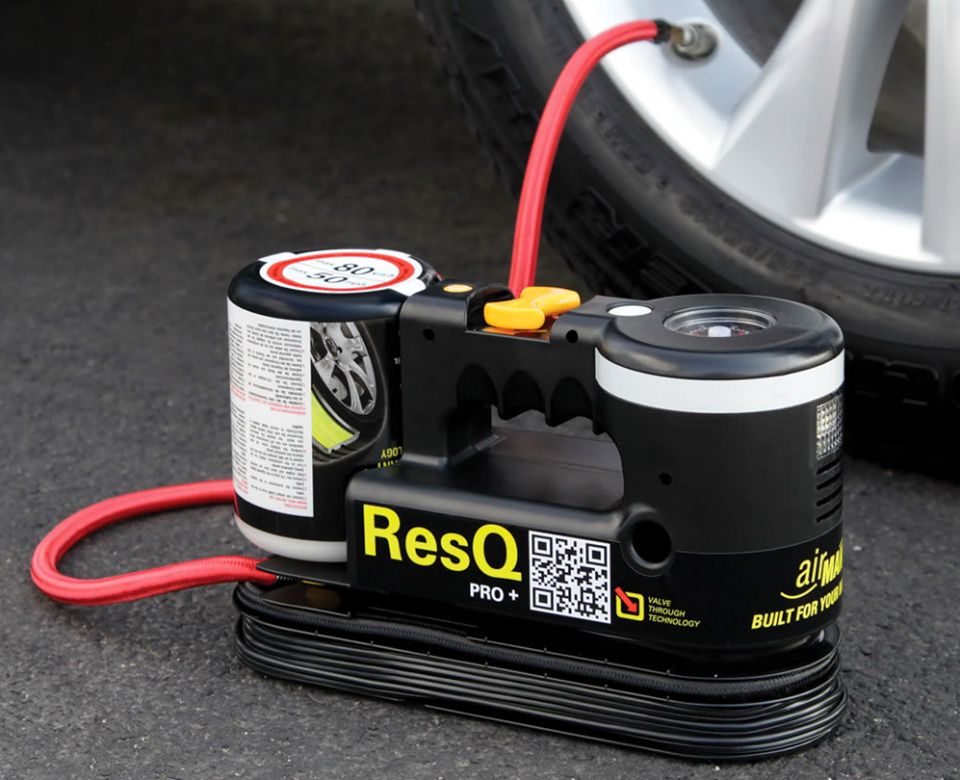
Alloy Wheel Repair Specialists, LLC.
© Copyright 2023 | All Rights Reserved
Privacy Policy | Accessibility Statement
Website Designed & Maintained by
Rocks Digital Marketing, LLC.
SHARE WITH A FRIEND
Send the page address to your friend!
https://www.rimrepaircenter.com/
=
Close [x]
We service alloy wheels from every make and model vehicle.
Our focus is on the quality of the repair, not quantity. Whether you are having one wheel straightened or a whole set of wheels repaired, powder coated, and changed to a new color rest assured that it will be a job well done.
Whether you are having one wheel straightened or a whole set of wheels repaired, powder coated, and changed to a new color rest assured that it will be a job well done.
We straighten bent alloy wheels. If you hit a pot hole, bend your wheel, and are loosing air or feeling a vibration while you drive give us a call!
Cracked alloy wheels can often be repaired by TIG welding, a highly skilled welding method. If welding your alloy wheel is not an option then we can help find you a replacement.
Curbed, scratched, faded, peeling alloy wheels can be repaired to look like new. Our goal is to repair your wheel so it looks brand new from the factory.
Change the color of your wheels instead of buying new ones. Spice up your ride. Return the wheels back to their OE look. High quality, factory coatings in every color imaginable.
Most alloy wheels are powder coated new from the factory.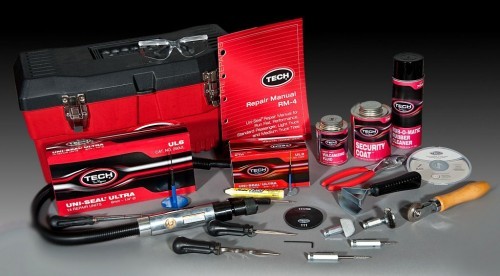 We use powder coating to replicate a new OE finish that can be, in some cases, better than a factory finish.
We use powder coating to replicate a new OE finish that can be, in some cases, better than a factory finish.
Recolor your calipers. Clean them up. Keep them looking factory with decals. Its like adding a light bulb to the inside of your wheel well.
Curb damaged wheels, bent rims, and cracked alloy wheel barrels are restored to OEM factory condition, inside and out, with a coating that will last in harsh conditions for years to come.
VIEW ALL SERVICES
For the past 15 years our focus at Wheel Tech has been on the quality of the repairs, not quantity. The owners are still involved in every job and take the time to speak with our customers and answer questions knowledgeably so that everyone has a clear understanding of exactly what is expected. Over the years, Wheel Tech has repaired thousands of alloy wheels. We have learned to be patient and pay close attention to every detail. We focus on doing a job correctly and not how fast we can get a job done.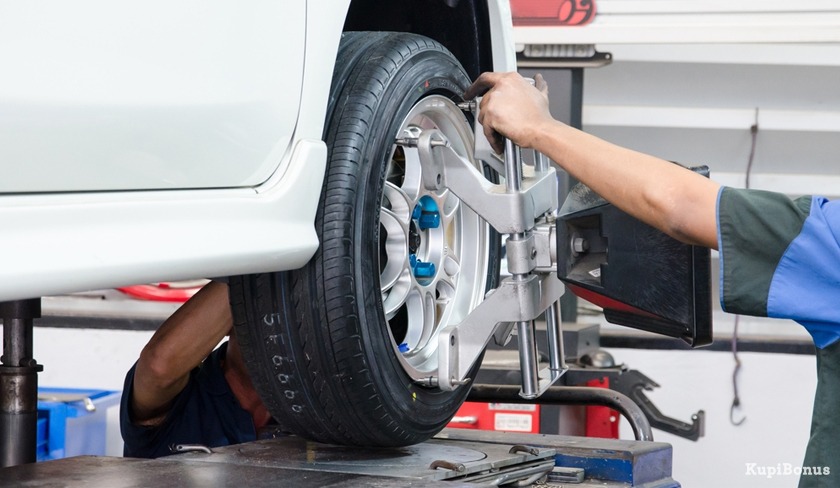 When you bring your alloy wheels for repair at Wheel Tech you are dealing with true craftsmen, with decades of experience, who are honest and have your best interests in mind.
When you bring your alloy wheels for repair at Wheel Tech you are dealing with true craftsmen, with decades of experience, who are honest and have your best interests in mind.
The end results keep us going. To see how beautiful an alloy wheel turns out after it has been refinished, or how round and perfectly balanced a bent alloy wheel becomes after being straightened has kept us motivated over the years. The absolute best reward is the look of satisfaction and excitement from a customer to know it was a job well done. It took many years of trial and error, many custom-built machines, and many failures to develop a seamless process that takes used, beat up, damaged, scratched, bent, and curbed alloy wheels and restores them to OEM factory condition, inside and out, with a coating that will last in harsh conditions for years.
Yes, this is what we specialize in – what exactly is the issue you are having? Note: If you bring your wheels to our shop we can let you know right away what is repairable and what is not.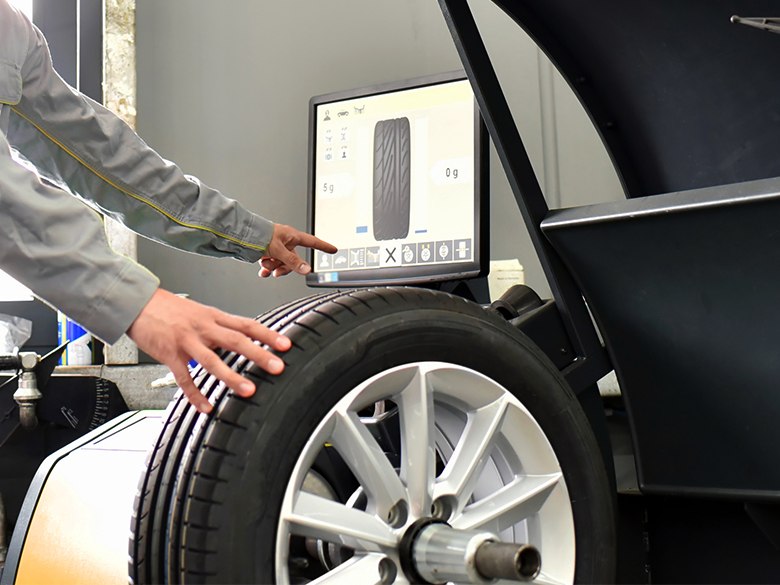
What exactly is wrong with your wheel and what size is it? Check out the pricing page
Yes, we can cosmetically repair your wheel to look “like new” using factory powder coatings.
Yes. If there is any problem we will let you know up front but in most cases we can match the existing color of your wheel using a powder coating.
READ MORE
© Copyright 2020 WHEEL-TECH | Website by www.dulcecielo.com
According to history, one day in 1888, an English veterinarian and cyclist, John Dunlop, tired of shaking through the countryside of Britain on molded rubber tires, glued a piece of water hose with a ring and pumped it up with a football pump - this is how the first pneumatic tire appeared.
History is silent when it was pierced for the first time - but most likely it happened in the same year. So the need for tire repair appeared simultaneously with their appearance. nine0003 Puncture required cut with burr
Over the past 124 years, tire repair technology has been brought to almost perfection. For several decades (after tubeless tires in the vast majority have given way to tubeless ones), the procedure for repair has practically not changed.
This procedure is outwardly quite simple - and car owners (as well as part of the workshop workers offering this service) have the false impression that it is not particularly important to follow the prescribed technology exactly - they say, "it will do." And many "specialists" do not really know the technology. And therefore they sincerely believe: why do we need all sorts of "extra" actions? Why take the tire off the rim when you can keep the wheel off the car at all? The client is in a hurry - so you can plug a puncture (and a cut) with a cord, as they say, “on the go”. Does not poison the air, and everyone is happy. By the way, some workshops that promise “repair of punctures and cuts” do not have anything at all, except for cords and an awl for their installation. nine0003
Does not poison the air, and everyone is happy. By the way, some workshops that promise “repair of punctures and cuts” do not have anything at all, except for cords and an awl for their installation. nine0003
In fact, each stage of tire repair technology is, as they say, "written in blood" - like military regulations and safety instructions. And this is not an exaggeration: what threatens a sudden rupture of a wheel at speed is not worth saying - if people do not die, then they are very lucky ...
We asked our expert, one of the heads of the Russian representative office of the German company "REMA TIP-TOP GmbH" Alexander Akhapkin, to talk about tire repair technology and those common mistakes (or even outright hack work) that car owners have to face. nine0003
- Tire repair, in general, comes down to a simple and understandable action: you need to plug the resulting "hole" in it. It sounds simple - like the instructions for skydiving: stepped out of the plane and pulled the ring. Only now, no one jumps with a homemade parachute, especially one packed according to rumors and advice from neighbors. Although the consequences of such a jump and improper tire repair are quite comparable.
Only now, no one jumps with a homemade parachute, especially one packed according to rumors and advice from neighbors. Although the consequences of such a jump and improper tire repair are quite comparable.
So let's go in order: how to do it!
So, the first step: determine the type of damage - is it a puncture or a cut? nine0003
The difference, of course, is in size. Roughly speaking, if no more than 1-2 cord threads are damaged, then this is a puncture. Anything more is a cut.
If it is a cut, it is important to determine its size. Tires have speed categories - and the higher it is, the smaller the amount of damage that can be repaired. For example, it is allowed to repair the tread of a category Q tire (not higher than 160 km/h) if the damage is not more than 20 mm. If the tire category is S (up to 180 km / h), then the size of the permissible damage is not more than 12 mm. And on a category H tire (up to 210 km / h), only a puncture with a diameter of not more than 3 mm can be repaired. nine0003
nine0003
In general, damage limits depending on their location, size and speed category of the tire are given in special tables RemaTipTop, compiled according to the results of tests and tests.
When repairing with a cord, it is necessary use adhesiveFor example, regarding damage to the shoulder of a category Q tire (up to 160 km/h), repairs are allowed if the “injury” does not exceed a diameter of 8 mm. And damage to the sidewall can be repaired if it is no more than 35 mm long (along the side height) and up to 20 mm wide. nine0003
Second step: what kind of repair is needed? To get there - or capital? The fact is that the most common repair of a puncture with a cord is actually exclusively temporary - just to get to the station and overhaul the tire. And often the car owner asks to fix an expensive tire with a cord, which he puts on an expensive car - and stops there. And at the stations they “go forward” to him: they say, the consequences are at the expense of the customer .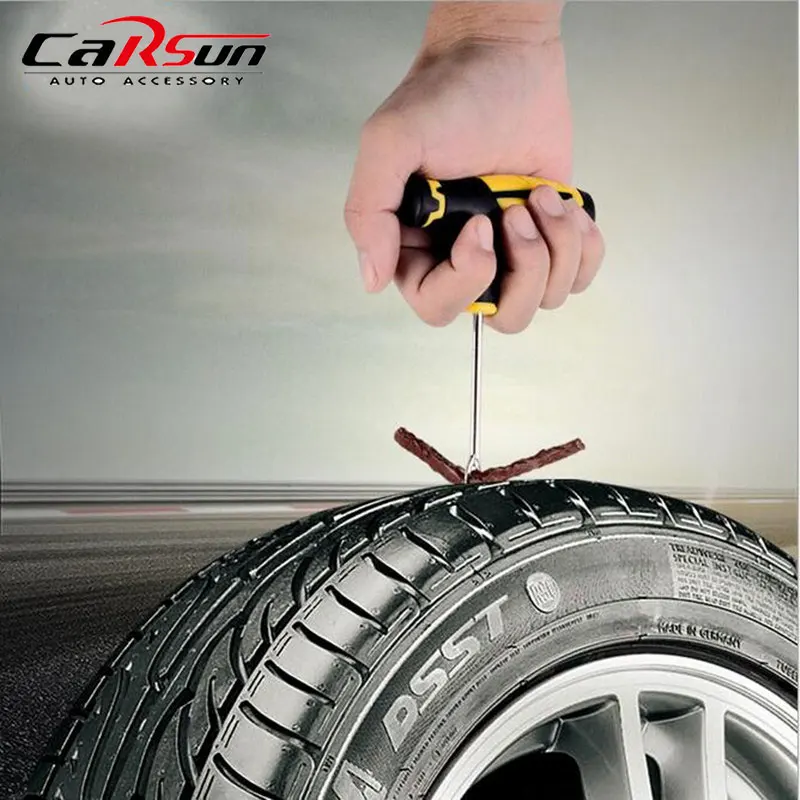 ..
..
But even with such a repair, some "masters" manage to cheat. The cord, before placing it in the puncture, is not even smeared with glue. There is a category of cords made of "raw" rubber (they are also called "snotty"). And it is mistakenly believed that glue is not needed for them. No - it's a must! nine0003
In addition, when repairing with a cord, it is necessary to form a hole with a burr to enter the repair material. And this is very often not done (on the principle - and so it will do!). For ten kilometers, maybe it will “get off” ...
Step three: puncture overhaul, after which the tire will reach its physical wear.
Fungi are installed at "vertical" punctures Here the choice of repair tactics depends on the location and area of damage. If the puncture axis runs perpendicular to the tread surface, then it is preferable to seal it with a fungus. If the puncture axis runs at an angle of more than 12 degrees from the surface, then a plug must be used.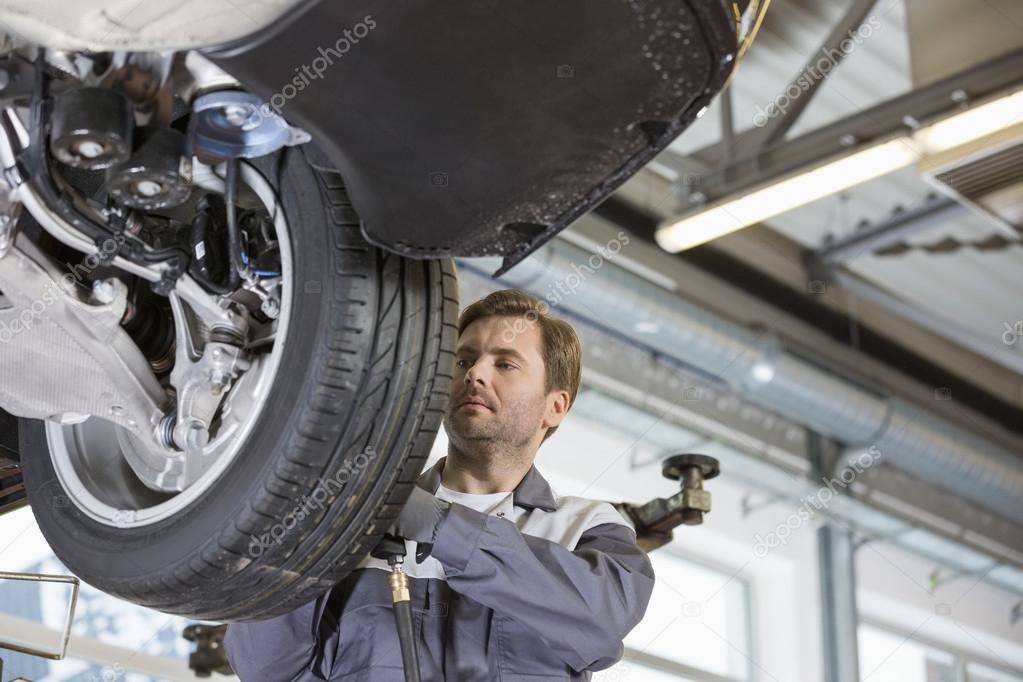 nine0003
nine0003
Tire repair fungus is preferred, but if the puncture is at an angle, the fungus cap will not be able to fit snugly against the inside of the tire. And over time it can come off - which, of course, is unacceptable.
In principle, all actions of the wizard when using both fungus and cork are the same. The puncture is drilled with a burr with a diameter of 3 mm or 6 mm. The repair area from the inside of the tire is processed with a roughening tool - this is done so that the glue applied to the fungus cap or patch (if cork is used) firmly adheres to the surface of the tire. nine0003
But this is followed by an outwardly simple but obligatory operation - the dust formed after drilling and roughening is carefully removed with a brass or coconut brush, and then vacuumed. Moreover, simple “blowing” or brushing with a rag is unacceptable!
Processing with a special solution - required! Then the repair area is smeared with glue (the Germans call it "cement" - that's what it says on the containers with it. In fact, this is a high-tech adhesive system) and a fungus or cork is introduced into the hole - from the inside of the tire! Moreover, until the moment of installation, it is impossible to remove the packaging from the fungus or cork - it can be easily removed when they are introduced into the hole to be sealed. After installing the cork, its excess is cut off - and the repair area is smeared with glue. A patch is applied on top. nine0003
In fact, this is a high-tech adhesive system) and a fungus or cork is introduced into the hole - from the inside of the tire! Moreover, until the moment of installation, it is impossible to remove the packaging from the fungus or cork - it can be easily removed when they are introduced into the hole to be sealed. After installing the cork, its excess is cut off - and the repair area is smeared with glue. A patch is applied on top. nine0003
Next, the fungus cap or plaster is rolled on. And it remains only to cut off the excess fungal stem or cork from the outside of the tire.
It is very important for temporary repairs with a cord and a major fungus or plug to use materials from only one company! The fact is that the adhesives themselves are spilled: some are based on hydrocarbons, and some are based on trichlorethylene. In addition, adhesives from different companies, even on the same basis, differ in composition. And therefore, in case of confusion, a reliable connection will not work - at best, it will last for some time.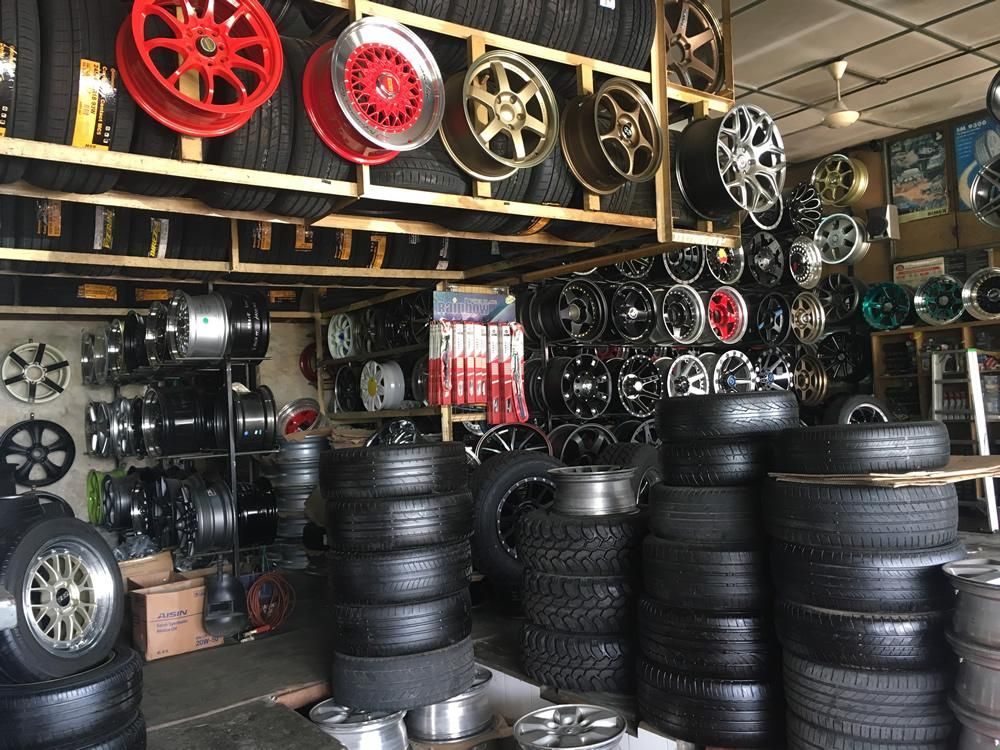 But - a little time ...
But - a little time ...
Fourth step: overhaul of large damage. Let me remind you that damage is considered large if it exceeds the puncture, but does not go beyond the maximum allowable. With such damage, the tire is only scrapped - it is no longer possible to achieve the necessary reliability.
The technology of such a repair is simple - but there are no "extra" steps and steps in it. Outside, the place of damage is cut "under the funnel" - part of the damaged rubber is removed, the remains of the cord. From the inside, the place under the patch sticker must be roughened. nine0003 The plaster is a high-tech article
Then the dust must be carefully removed after processing with a vacuum cleaner - and this operation must not be skipped!
Further, the “funnel” is treated with a special solution: in the case of using the “Tip Top” technology, this is “MTRThermopress”.
And filled with raw rubber of the same brand as on the tire - heated strips or a special extruder. Raw rubber is treated with the same solution. And immediately closed with insulating foil for subsequent vulcanization. nine0003
Raw rubber is treated with the same solution. And immediately closed with insulating foil for subsequent vulcanization. nine0003
Please note - do not skip a double treatment with mortar, nor cover the vulcanization site with foil!
A plaster is applied from the inside of the tire to the damaged area. And be sure to roll with a special rolling - this stage also cannot be skipped.
Something about band-aids: don't try to save money by replacing the "branded" band-aid with a piece of rubber! In fact, a patch is a rather complex rubber product reinforced with synthetic or steel threads that coincide with the direction of the tire cord threads. nine0003
Patches are produced separately for bias and radial tires. For their correct orientation (it is very important!) Arrows are applied on each of them, which are directed to the sides. You cannot cut the patch "to size" - it cannot be cut at all due to the complex internal construction of the cords. Companies produce several sizes of patches - and you need to choose from them using the Type Top damage table.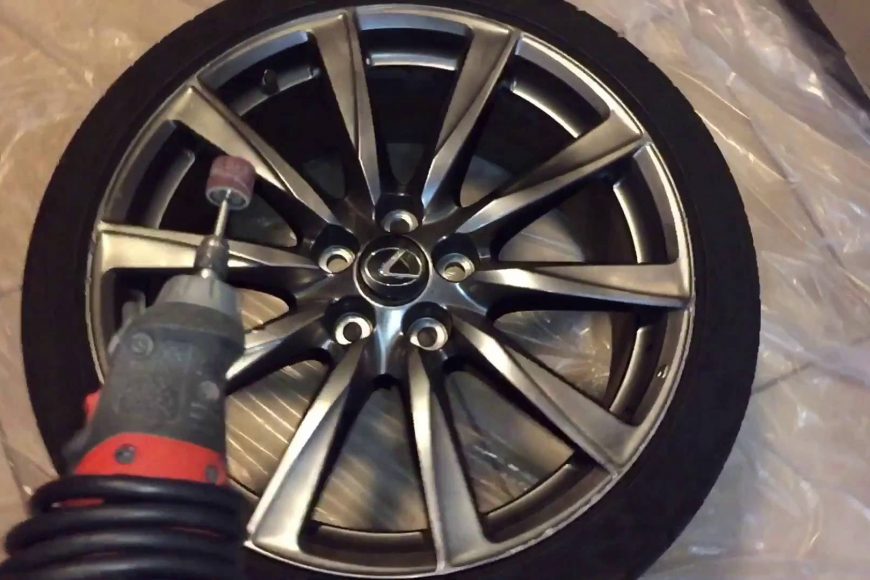
Naturally, the use of patches and adhesives with which they are glued, produced by different companies, is unacceptable - “cement” is applied to the surface of the patch, which needs to be smeared on the surface from the inside of the tire: only in this case the connection will be reliable and durable.
Step five: vulcanization. In order to vulcanize a "sandwich" of raw rubber, tire and plaster, it must be heated. But the problem is that vulcanizers, the power of which allows you to warm up the entire volume of the repaired area, are expensive and consume a lot of electricity. In addition, they are bulky - the area of \u200b\u200bthe heating plate must exceed the size of any patch. So not every workshop can afford such a vulcanizer. nine0003
There is another solution - the so-called "two-stage" repair method. This is when a vulcanizer that is more affordable and consumes less electricity is only the site of damage.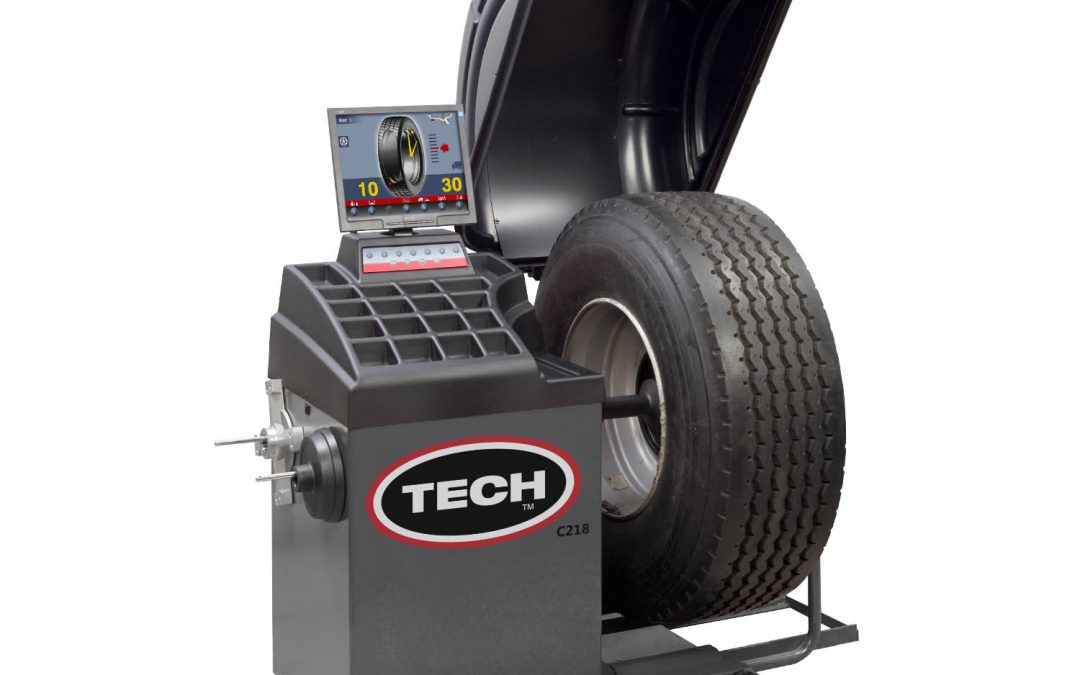 Its size is not enough to vulcanize the connection of the patch and the tire.
Its size is not enough to vulcanize the connection of the patch and the tire.
But it's okay - there is an effect called "cold vulcanization". Glue BL and the coating of the plaster from Tip Top are just capable of such a "cold" vulcanization.
However, if after a one-stage - “hot” - vulcanization, the tire can be mounted on wheels and installed on a car, then after a two-stage one (when only raw rubber warms up, and the patch is glued “cold”), you will have to wait at least 24 hours before mounting. It is these days that constitute the second stage - the time is required for the cold polymerization of the connecting layer to be completed. nine0003
So, to summarize, the “main secret of tire repair” is not in some particularly complex nuances of the technology - it is simple. The secret is in the accuracy and meticulousness of following simple instructions. In which, I repeat, there are no “extra” stages
tire service
Tube repair patches are an essential repair tool in the tire industry. With them, you can repair damaged tubes by cold vulcanization and your tires will last for a long time. Patches must be installed correctly for optimal results.
With them, you can repair damaged tubes by cold vulcanization and your tires will last for a long time. Patches must be installed correctly for optimal results.
Read
Breakdown (cut) of the side surface of the tire can occur for various reasons. The most common cause is damage caused by the contact of the sidewall with the wheel rim when hitting a hard obstacle with a low tire at high speed. In addition, characteristic damage occurs when the tire comes into contact with sharp objects, such as rebar or a curb.
Read
Radial Tire Repair Patches allow you to repair sidewall, shoulder and tread damage on any radial tire. The special cord included in the design of the patch provides it with flexibility and heat resistance. If the patches are installed correctly, the tires will last for a long time.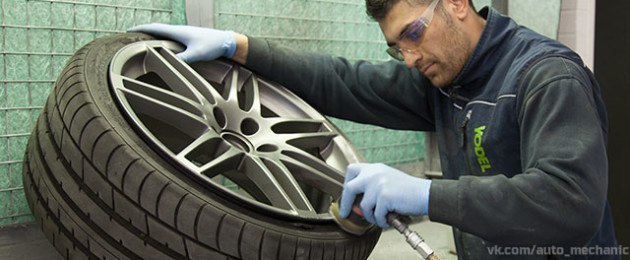
Read
TECH replacement valves are the first replacement valves in the tire industry. They give new life to damaged cameras. Cameras repaired in this way will serve for a long time or many thousands of kilometers. But like any high quality product, TECH replacement valves must be installed correctly for optimal results. Only with proper installation, the camera will reliably serve until the expiration of its service life. nine0003
Read
The tire bead sealant is designed to be applied to the inner side of the tire bead when it is mounted on the rim. The bead sealant seals the contact area between the tire and the rim.
Read
Tire repairs must be done correctly for maximum safety and efficiency. Reliable materials can be ineffective if used incorrectly. By following this guide exactly, you can repair punctures with optimal results and your tires will be back on the road in good condition. nine0003
Reliable materials can be ineffective if used incorrectly. By following this guide exactly, you can repair punctures with optimal results and your tires will be back on the road in good condition. nine0003
Read
In order to realistically assess the magnitude of the imbalance, it is necessary to accurately center the wheel on the shaft of the balancing stand: the wheel must be located strictly perpendicular to the shaft and the axis of rotation of the wheel must coincide with the axis of rotation of the shaft. Only when these two conditions are met can real imbalance values be obtained. To meet these requirements, when balancing the wheel, it is necessary to use special adapters. nine0003
Read
Car tires are made of rubber, metal wire and fabric.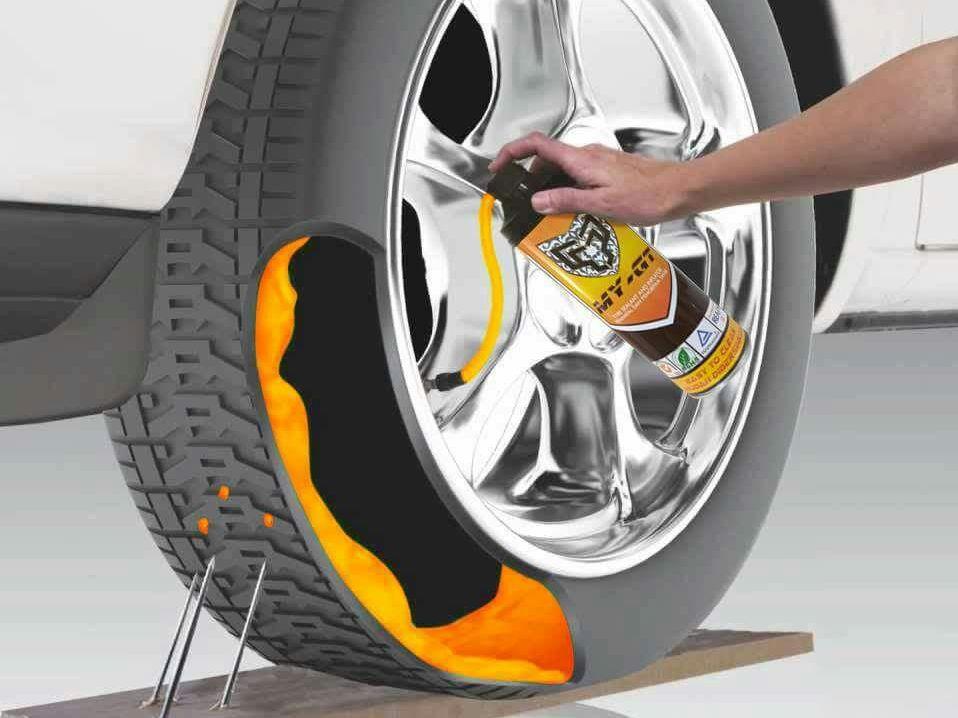 Materials for the manufacture of rubber are: natural rubber, synthetic rubber, reclaimed rubber. Regenerate is a product of the recycling of recycled rubber products. To meet the requirements for tires (low heat generation, high endurance to variable loads, weather resistance, elasticity, heat resistance, gas tightness), special additives are used: antioxidants, vulcanizers, accelerators, retarders, plasticizers, enhancers (active fillers), softeners, dyes. nine0003
Materials for the manufacture of rubber are: natural rubber, synthetic rubber, reclaimed rubber. Regenerate is a product of the recycling of recycled rubber products. To meet the requirements for tires (low heat generation, high endurance to variable loads, weather resistance, elasticity, heat resistance, gas tightness), special additives are used: antioxidants, vulcanizers, accelerators, retarders, plasticizers, enhancers (active fillers), softeners, dyes. nine0003
Read
Wheel repair in most cases is limited to repairing a tire or a chamber (if any), but with a strong impact on an obstacle, cases of damage to the wheel disk are not uncommon. In the presence of deformation of steel (or stamped) disks, they are repaired by rolling on special rolling machines, or ruled with a sledgehammer, which is often found on the road.
Read
nine0094 Hernia repair Wheel bulge or "hernia" is one of the most common defects that occur on a tire during operation.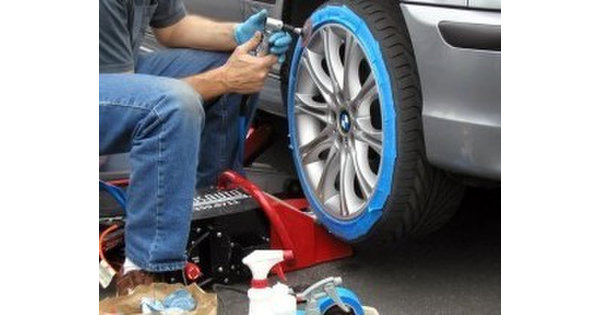 A hernia occurs when the cord threads that form the basis of the tire carcass are damaged. To eliminate a hernia on a wheel, special cord patches are currently used, which carry one or more layers of cord.
A hernia occurs when the cord threads that form the basis of the tire carcass are damaged. To eliminate a hernia on a wheel, special cord patches are currently used, which carry one or more layers of cord.
Read
Currently, there are both Russian and foreign companies on the market offering a wide variety of materials for tire repair and balancing. The main and most famous companies are: Russian Rossvik, Clipper, Thermopress, BHZ, American TECH, Patch Rubber, XTRA-SEAL, Japanese MARUNI, German TIP-TOP.
Read
Wheel repair is one of the most popular services offered by tire shops. The increased demand for this service is primarily due to the unsatisfactory condition of the road surface, in contact with which damage to the wheel rim often occurs. nine0003
nine0003
Read
Camber - convergence of wheels is one of the most necessary and popular procedures that should be performed according to the recommendations of car manufacturers every 30 - 40 thousand km. Camber is the angle between the plane of rotation of the wheel and perpendicular to the axis in the vertical direction. The collapse can be positive, negative and zero. Positive camber is the one in which the upper side of the wheel is directed outward, respectively, the one in which the same side of the wheel is directed inward. The ideal condition is zero camber, in which the wheels are strictly vertical. nine0003
Read
The tire load index is one of the main inscriptions that informs the motorist about the maximum load that this tire can withstand.